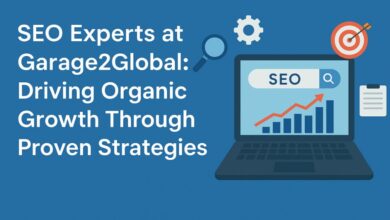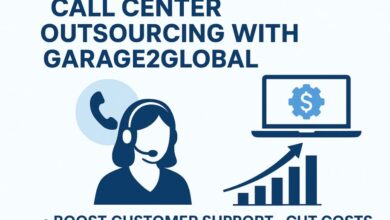PLG Supplies: A Gentle Roadmap to Modern Supply-Chain Success

In the ever-evolving world of global commerce, supply chains have become the lifeline of business continuity and growth. Amid complex networks and rapid demand shifts, PLG Supplies emerges as a strategic framework—standing for Plan, Logistics, and Growth—that helps businesses navigate uncertainty with a structured approach.
More than just a supply solution, PLG Supplies is a philosophy that encourages businesses to prepare thoughtfully, execute precisely, and scale sustainably. This roadmap brings clarity, agility, and resilience to supply-chain management, making it suitable for sectors like manufacturing, healthcare, construction, and retail.
Understanding the PLG Model: Plan, Logistics, Growth
Let’s break down the PLG Supplies framework into its core components:
1. Plan
Planning is the foundation of any successful supply-chain initiative. It involves:
-
Mapping the Supply Network: Identifying suppliers, manufacturers, distribution centers, and transportation links.
-
Demand Forecasting: Using historical and market data to predict product needs.
-
Risk Assessment: Recognizing vulnerabilities such as supplier delays, geopolitical risks, and material shortages.
-
Cost Optimization: Evaluating cost structures in procurement, storage, and distribution.
A well-laid plan minimizes surprises and enables proactive responses to disruption.
2. Logistics
Once the plan is in place, logistics ensures efficient movement, storage, and handling of goods:
-
Transportation Management: Coordinating inbound and outbound shipping with optimal modes and routes.
-
Warehouse Operations: Streamlining receiving, stocking, picking, and packing.
-
Inventory Control: Balancing stock levels to avoid overstock or stockouts.
-
Technology Integration: Using systems like Warehouse Management Systems (WMS), GPS tracking, and barcoding.
Logistics bridges the gap between planning and execution—turning strategy into reality.
3. Growth
The final pillar, growth, focuses on scaling operations while maintaining efficiency:
-
Supplier Development: Strengthening supplier relationships through training and performance metrics.
-
Innovation Adoption: Integrating AI, IoT, and automation for real-time monitoring and decision-making.
-
Sustainability Initiatives: Using recyclable packaging, low-emission transport, and energy-efficient warehouses.
-
Global Expansion: Identifying new markets and distribution channels.
Growth makes the supply chain not just operational but also competitive and future-proof.
Key Benefits of Adopting PLG Supplies
✅ Operational Efficiency
With better planning and logistics integration, companies reduce lead times and improve throughput.
✅ Cost Control
Strategic sourcing and optimized transportation help lower overheads.
✅ Resilience and Agility
Being prepared for disruptions—like pandemics or raw material shortages—helps maintain continuity.
✅ Scalability
Businesses can expand operations without creating bottlenecks or quality dips.
✅ Sustainability
Growth strategies focused on eco-consciousness support long-term compliance and reputation.
Industry Applications of PLG Supplies
🏭 Manufacturing
Manufacturers use PLG to streamline procurement, minimize production downtime, and ensure timely deliveries.
🏥 Healthcare
Hospitals and clinics apply PLG to manage medical inventory, equipment sourcing, and emergency stockpiles.
🏗 Construction
Builders rely on PLG Supplies for sourcing fasteners, safety gear, and MRO products at scale and on time.
🛒 Retail & E-Commerce
Retailers and digital merchants deploy the PLG roadmap to enhance last-mile delivery, returns handling, and seasonal demand spikes.
Step-by-Step PLG Supplies Roadmap
Step 1: Evaluate Your Current Supply Chain
-
Analyze sourcing channels
-
Review vendor reliability
-
Calculate lead times and fulfillment rates
Step 2: Centralize and Clean Data
-
Collect procurement data, supplier histories, and inventory reports
-
Use dashboarding tools to visualize supply-chain performance
Step 3: Create a Planning Blueprint
-
Define KPIs: fill rate, order accuracy, inventory turnover
-
Identify quick wins like switching to local suppliers or adjusting stock thresholds
Step 4: Strengthen Logistics Infrastructure
-
Upgrade WMS or TMS (Transportation Management System)
-
Consolidate freight shipments to reduce costs
-
Introduce predictive analytics for shipping delays
Step 5: Build for Growth
-
Onboard digital feedback systems to track supplier scorecards
-
Automate repetitive processes like invoicing and stock alerts
-
Explore market opportunities where current suppliers underperform
Tools That Empower PLG Supplies Execution
-
ERP Systems (e.g., SAP, Oracle): Offer real-time inventory and financial tracking.
-
IoT Devices: Monitor asset conditions and shipping environments.
-
AI/ML Forecasting: Analyze seasonal trends and global demand signals.
-
EDI Platforms: Streamline supplier communications and purchase orders.
These tools enable transparency and traceability across the supply chain.
PLG Supplies vs. Traditional Supply Chain Models
| Feature | Traditional Model | PLG Supplies Model |
|---|---|---|
| Focus | Transactional fulfillment | Strategic, proactive |
| Technology Use | Basic systems | AI/IoT integration |
| Growth Emphasis | Often static | Built-in scalability |
| Resilience | Reactive | Risk-informed planning |
| Environmental Impact | Not prioritized | Sustainability aligned |
Despite its benefits, PLG Supplies implementation isn’t free of hurdles:
-
Resistance to Change: Employees and partners may push back on new tech or workflows.
-
Data Inaccuracy: Incomplete or outdated data can derail planning.
-
High Initial Investment: ERP systems and automation can require upfront capital.
-
Supplier Coordination: Aligning multiple vendors on a new framework can take time.
However, these challenges can be overcome with phased rollouts, stakeholder training, and transparent communication.
Case Example (Hypothetical): How a Mid-Sized Manufacturer Used PLG Supplies
Company: Titan Tools Co.
Industry: Industrial tools manufacturing
Problem: Frequent stockouts, high transport costs, poor demand forecasting
Actions:
-
Conducted full data audit and supplier review (Plan)
-
Switched to hybrid logistics with regional fulfillment centers (Logistics)
-
Adopted AI-based demand planner and initiated eco-packaging (Growth)
Results after 12 months:
-
20% reduction in fulfillment lead time
-
30% drop in emergency shipping costs
-
15% sales growth in a new market
Sustainable Supply Chains: The “Green” in Growth
One of the most future-ready aspects of the PLG model is its focus on sustainable growth. Businesses are now being judged not just by profits but by environmental stewardship.
PLG Supplies encourages:
-
Partnering with green-certified vendors
-
Recycling and reuse of materials
-
Electrifying fleets and optimizing routing to reduce carbon emissions
-
Using biodegradable packaging and ethical labor sourcing
By embedding ESG principles into the supply chain, companies strengthen their brand and reduce regulatory risks.
How to Start with PLG Supplies Today
-
Leadership Buy-in: Educate top executives on the PLG model’s strategic value.
-
Hire or Train Experts: Consider hiring supply chain analysts or certifying your team.
-
Pilot Program: Test PLG in one division before scaling.
-
Measure Impact: Use KPIs like order cycle time, inventory turnover, and supplier reliability score.
-
Iterate: Continuously refine the framework based on data and feedback.
Future of PLG Supplies
As global challenges evolve—from pandemics to climate change—so must supply chains. PLG Supplies is a dynamic, living framework that adapts to technological advancements and shifting customer expectations.
Future trends likely to shape its evolution include:
-
Blockchain for Supplier Transparency
-
Digital Twins for Predictive Modeling
-
Robotics for Warehousing Efficiency
-
Hyperlocal Micro-fulfillment Centers
Businesses that adopt PLG Supplies today position themselves as tomorrow’s leaders.
Conclusion
PLG Supplies isn’t just a supply chain strategy—it’s a business enabler. By aligning Planning, Logistics, and Growth, companies gain a powerful, adaptable structure for navigating modern markets. From improved visibility and reduced waste to long-term sustainability and profitability, PLG Supplies offers the complete roadmap.
Whether you’re a small manufacturer or a global retailer, this gentle roadmap could be the key to your supply chain transformation.
Published by Trend Loop 360

